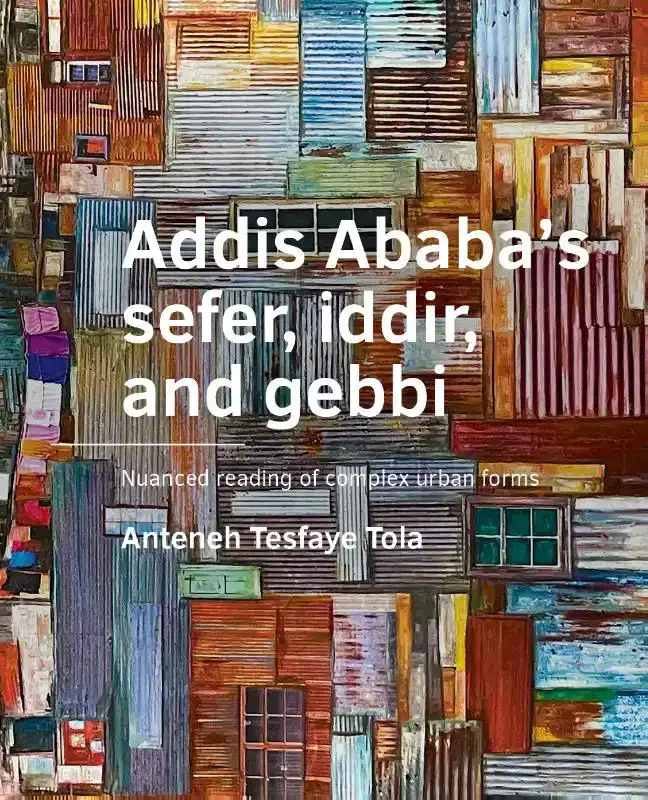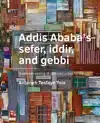- Engels
- Study
- nature & science
- technische wetensch.
- bouwkunde
- ADDIS ABABA'S SEFER, IDDIR, AND GEBBI
TOLA, ANTENEH TESFAYE
ADDIS ABABA'S SEFER, IDDIR, AND GEBBI
29,95incl BTW
Vertrouwd sinds 1927
Persoonlijke aandacht en advies
Vanaf 17,50 gratis verzenden NL & BE
Meer dan 150.000 artikelen online
Omschrijving ADDIS ABABA'S SEFER, IDDIR, AND GEBBI
This research is motivated by the scholarly calls for new concepts and analytic tools for documenting, analysing, and theorizing complex urban territories such as those of cities in Africa. With implicit comparative intent, it takes the case of Addis
Ababa city and its old and typifying places-the sefer, to develop and test a new architectural transdisciplinary research methodology referred to as the trinocular. By way of this methodology, it unearths and introduces sefer, iddir, and gebbi of Ad
dis Ababa as not only socio-spatial phenomena but concepts and vocabulary for a located and nuanced reading of the city itself. Sefer are introduced as flexible boundary conditions that are primarily cognized by their dwellers-results of indigenous a
nd autochthonous foundation and continued processes of self-actualization by communities that construct them. Iddir is unearthed as a form of social capital embedded in sefer that appears in the structures of relations among residents. And the gebbi
as an urban spatial typology that constitutes the sefer''s morphology-the last frontier of communality just prior domestic spaces which, in many cases, can be a single multi-functional room.
These concepts and vocabulary, it is argued, in both pr
actical and metaphoric sense, should be the starting point of new urban imaginaries for Addis Ababa. Urban planning and housing projections thus, should draw inspiration from these notions, elements, and phenomena. Furthermore, lessons learnt from th
e trinocular and the findings are presented as new avenues for architectural research in similar, less-known, and complex urban conditions as the sefer of Addis Ababa.approach.
Ababa city and its old and typifying places-the sefer, to develop and test a new architectural transdisciplinary research methodology referred to as the trinocular. By way of this methodology, it unearths and introduces sefer, iddir, and gebbi of Ad
dis Ababa as not only socio-spatial phenomena but concepts and vocabulary for a located and nuanced reading of the city itself. Sefer are introduced as flexible boundary conditions that are primarily cognized by their dwellers-results of indigenous a
nd autochthonous foundation and continued processes of self-actualization by communities that construct them. Iddir is unearthed as a form of social capital embedded in sefer that appears in the structures of relations among residents. And the gebbi
as an urban spatial typology that constitutes the sefer''s morphology-the last frontier of communality just prior domestic spaces which, in many cases, can be a single multi-functional room.
These concepts and vocabulary, it is argued, in both pr
actical and metaphoric sense, should be the starting point of new urban imaginaries for Addis Ababa. Urban planning and housing projections thus, should draw inspiration from these notions, elements, and phenomena. Furthermore, lessons learnt from th
e trinocular and the findings are presented as new avenues for architectural research in similar, less-known, and complex urban conditions as the sefer of Addis Ababa.approach.
Specificaties
- MerkBK Books
- GroepTECHNISCHE WETENSCH (950)
- Barcode9789463667395
- LeverstatusActief
Reviews
0.0/5.0
Gemiddelde uit 0 reviews
Meest behulpzame reviews
Nog geen reviews geschreven


